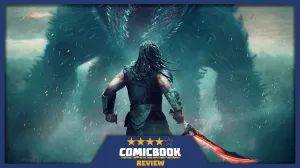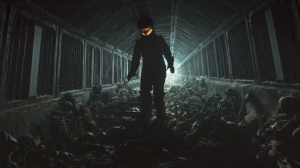The original Predator movie unleashed a nameless creature upon audiences, a perfect foil for Arnold Schwarzenegger’s action hero. In the decades since, the expanded universe of Predator novels and comic books gave the species a name, the Yautja, and meticulously developed their complex culture and warrior creed. In live-action, however, this rich lore has remained largely untapped, with the few cinematic attempts to explore their society falling drastically short. That is all changing thanks to the vision of director Dan Trachtenberg, who has breathed new life into the franchise with a series of acclaimed films. Two of these projects, the animated Predator: Killer of Killers and the live-action film Predator: Badlands, have finally begun to give broader audiences their first meaningful insight into the Yautja homeworld within the established cinematic universe.
Videos by ComicBook.com
Warning: Spoilers below for Predator: Killer of Killers and Predator: Badlands.
Predator: Killer of Killers tells three distinct stories of humans who bested Yautja warriors across different centuries. Making the most of animation’s limitless potential, Trachtenberg ensured each of these hunters looked unique, with specific gear, specialized weapons, and distinct fighting styles. This creative choice immediately teased the breadth of Yautja culture, suggesting that clans have access to different tools and adhere to their own martial traditions.
The ending of Killer of Killers provides a stunning climax by taking viewers directly to Yautja Prime, the species’ homeworld, revealed to be a desert wasteland where only the strongest can possibly survive. The movie’s finale takes place within a massive gladiatorial arena, where the Yautja force cryogenically frozen warriors from different species to fight to the death. The victors earn the honor of facing the clan’s leader in single combat. These tantalizing pieces of world-building are vastly expanded upon in Predator: Badlands, a film that shifts its focus entirely to the aliens themselves.
How Predator: Badlands Addresses the Yautja Social Structure

Predator: Badlands begins on Yautja Prime, where the young warrior Dek (Dimitrius Schuster-Koloamatangi) is trained by his older brother, Kwei (Mike Homik). Dek is the smaller and weaker member of his tribe, a physical deficiency that leads his own father, Njohrr (Schuster-Koloamatangi), to order him culled. The Yautja respect nothing but strength, and any sign of weakness is seen as a blemish that must be violently erased. When Kwei attempts to defend his younger brother, Njohrr kills him without hesitation. This brutal act establishes that accepting weakness is a weakness in itself, a crime punishable by death. As a result, the opening scene of Predator: Badlands immediately underlines that being ruthless is the only path to earning respect from other Yautja.
Dek’s training also reveals critical details about how Yautja society integrates technology with merit. For instance, Dek does not have access to the camouflage module of his armor because he has yet to prove his worth by hunting a mighty prey. A crucial part of the Yautja adulthood ritual involves choosing a hunting ground from a list of dangerous planets, of which Earth is a notable option, and returning home with spoils that prove the warrior has bested that world’s mightiest killers. This system creates a direct association between the weapons a Yautja wields and how deadly they are. The more a hunter kills, the better the tools they earn as a reward, which in turn allows them to face even greater challenges and bring more honor to their name.

This caste system appears to extend beyond the individual to the clans themselves. The dwellings where Dek’s original tribe lives are visibly more humble than the colossal colosseum seen in Killer of Killers. Furthermore, the Yautja in the animated film seemed to be better equipped than Njohrr and his personal guards. This suggests that just as a single Yautja can become more important to his tribe through successful hunts, entire clans can gain access to better technology and a higher standing as they prove their collective worth. That would explain why culling the frail is such a vital part of their culture, as the weakness of a single warrior could reflect poorly on the entire clan and hinder its advancement.
Predator: Badlands already sets up a sequel with a post-credits scene in which Dek’s mother arrives in a formidable ship, prompting Njohrr’s whole clan to arm themselves in response. We do not know exactly what this confrontation means, but it is clear that Trachtenberg has big plans for the future of the franchise.
Predator: Badlands is now available in theaters.
What aspects of Yautja culture and society do you hope to see explored in future Predator films? Leave a comment below and join the conversation now in the ComicBook Forum!









